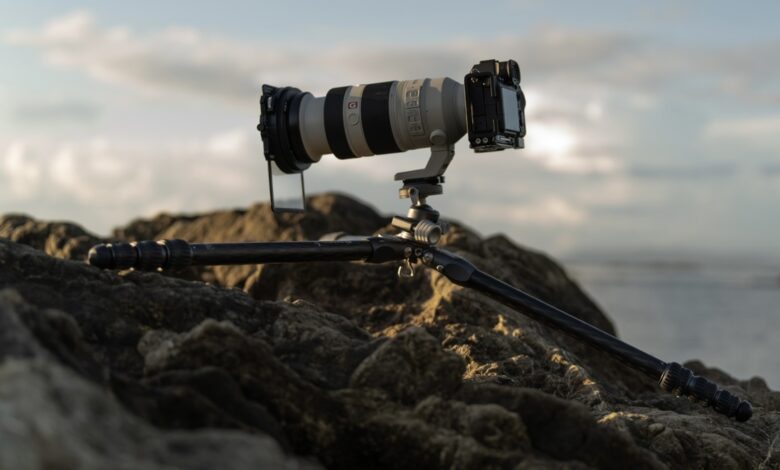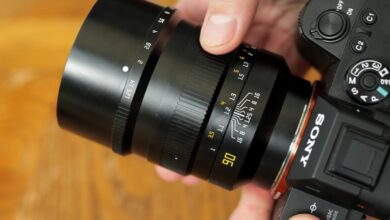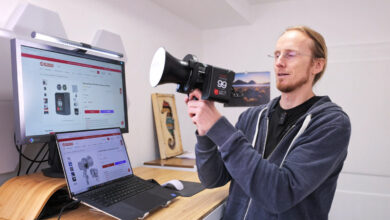Want to try landscape photography? Here’s what you need to know about lenses before you start

Before you set out to become a landscape photographer, there are a few important things you should understand if you want to be well prepared. Landscape photography gets better as you experience different shooting situations, but here are some tips to get you started.
Landscape photography is one of the most appealing genres of photography for any new photographer who loves to travel and explore nature. If you are new to photography and are still exploring all the different genres, landscape photography should definitely be at the top of your list if you enjoy finding unique perspectives of both ordinary and extraordinary locations.
Most of the time, having the right lens plays a much bigger role in landscape photography than having a more advanced camera body. In favorable lighting conditions, cameras with different sensors can produce similar images, but that can only be achieved by having the right lens to help create great compositions. However, here are a few things to consider before you start building your landscape photography arsenal.
Your Kit Lens is Still the Best Lens to Start With
Kit lenses, or the lenses that come in the box with your first camera, are probably the most underrated type of lens in the photography world. Because they’re always the “beginner” lenses that everyone upgrades to, people often forget why they’re the lenses that come with your camera that you can buy off the shelf.

Why kit lenses are (99% of the time) the same 16-50mm or 18-55mm range for APS-C and 24-70mm or the 28-70mm range for full-frame cameras is that they are essentially the same lens used for different sensors. These lenses are known as standard zoom lenses and the reason why they are considered the best to pair with a camera is because of how versatile they are in terms of the angle of view they can provide. 24mm is quite wide, while 70mm is tight enough to isolate objects from a small distance.
Essentially, these kit lenses offer the same perspective as a higher-end 24-70mm lens, but the difference is that most of the time, kit lenses have variable (and relatively smaller) maximum apertures, and more expensive lenses are often made with better glass. That means that as you zoom in, the maximum aperture you can use gets smaller, which limits your low-light performance and depth of field. But in terms of creating images with the same composition and framing as a higher-end lens, kit lenses are certainly capable and can help you get started on your landscape photography journey.

Before Buying a Second Lens for Landscape Photography
One thing you should know early on about landscape photography is that there are many sub-genres within the genre, largely dependent on location, which greatly influences the shooting style and equipment requirements. Of course, you should try each one, but you will most likely have specific ones that you like. Landscape photography can be done anywhere from small ponds, in the middle of the woods, at the foot of waterfalls of various sizes, on top of mountains, and even inside urban homes. Each type has its own workflow, which means it will have a different set of ideal lenses. To make the discussion simpler, we will divide them into two sets that will differ depending on which type of lens you can use better.
Should you buy an ultra-wide angle lens first?
The most common piece of lens advice you’ll get (especially from photographers who don’t have much experience with landscape photography) is that you should buy an ultra-wide angle lens. While they’re not entirely wrong, giving advice that isn’t based on the type of landscape photography you enjoy can be over-generalizing and may not end up being very satisfying.

An ultra-wide-angle lens is a lens with a focal length wider than 24mm. Typically, this is a zoom lens with a focal length of 16-35mm for full-frame cameras and 10-18mm for APS-C cameras. However, there are also a variety of prime lenses available across all brands such as 20mm, 15mm, 12mm, and 10mm. Ultra-wide angle lenses are useful in situations where maximizing the angle of view is beneficial to the composition. Such situations are when there is very little space between the photographer and most of the objects that make up the landscape image.
This mainly applies to photographing any large structures in close proximity or with important foreground elements. Common examples include photographing entire waterfalls, bodies of water with mountains, trees or even buildings in the background (and potentially reflected on the surface), and photographing seascapes that include the motion of crashing waves or flowing water.
Should you buy a telephoto lens first?
A common misconception about landscape photography is that you should use a wide-angle lens whenever you are photographing a wide-open view. However, this often results in capturing such a large space because of the wide angle of view, thus minimizing the fine details that are hidden in the scene from a small distance. For such cases, a longer zoom lens can be more beneficial as it can allow you to get closer and isolate distant objects and compress the scene into a more refined composition.

Telephoto lenses are lenses with focal lengths exceeding 70mm. The most popular telephoto lenses on the market are 70-200mm zoom lens as well 70-300mm options. There are also options with different ranges like the 35-150mm lens which offers a more versatile range, 100-400mm providing even further range, 150-600mm super telephoto zoom lenses and many other prime lenses. The 70-200mm lens is the most popular because it can be combined with a standard zoom lens and has a significant range of action.
For landscape photography, telephoto lenses excel at isolating distant objects, highlighting parts of a wide field of view, and capturing details of larger structures close-up. Because they allow the photographer to show something that the human eye often misses, telephoto lenses can allow you to photograph a location from a different perspective.
Other options to consider
Another option to consider is upgrading your kit lens to something with even more range. Extended standard zoom lenses come in many different forms but can do what a standard zoom lens does plus more range. Some of the best lenses in this category are 24-105mm Full frame lenses are available from most camera manufacturers. For APS-C cameras 17-70mm And 18-105mm are the most popular. There are even more versatile lenses in terms of focal length, such as the 28-200mm and 28-300mm for full-frame cameras, and the 18-200mm and even the 18-400mm for APS-C cameras. The downside to such versatile walk-around lenses is that they often have inferior image quality when compared to the regular 24-105mm versions. However, they are still viable options, especially if your main goal is to be able to cover the range you need for your preferred type of photography.
Making smart lens decisions should always be guided by what we anticipate shooting and the types of compositions that our vision and artistic intentions dictate. Of course, in a perfect world it would be great to have all the options available, but the reality is that budget and/or physical limitations come into play. Sometimes, one or two lenses can help you create all the shots you want, especially when planning and foresight are good.




